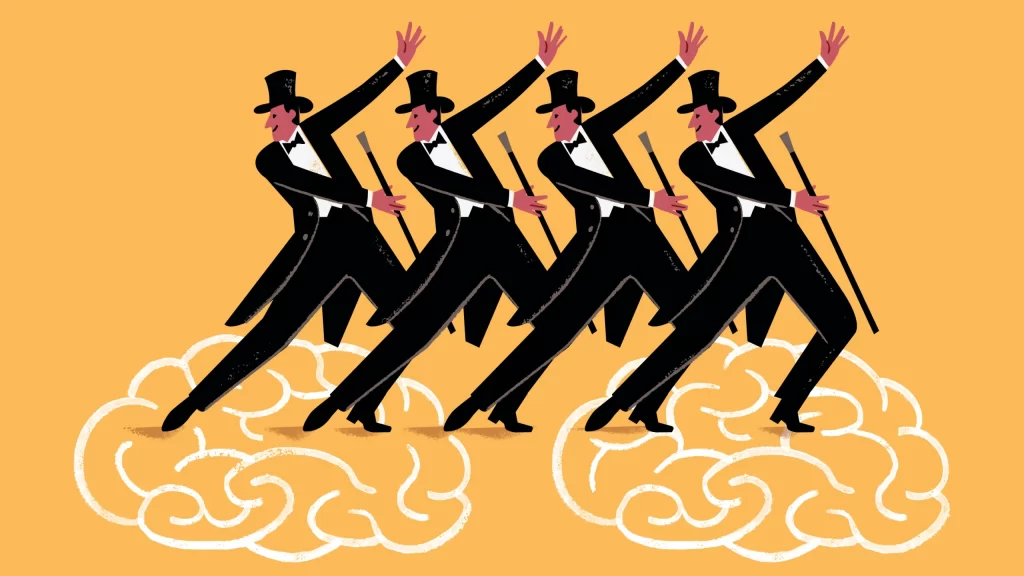Brainwaves aligned with each other is called inter brain synchrony.
A growing body of research shows that neural activity synced up among multiple people, results in better social and creative outcomes. Scientists find that synchrony between brains improves problem-solving, learning, cooperation, and facilitates helpful behaviors. Studies in which brains were stimulated with an electric current hint that synchrony itself might cause these improvements.
Dozens of recent experiments studying brain activity of people performing and working together like duetting pianists, card players, teachers and students, jigsaw puzzlers and other joint activities show that their brain waves aligned as interpersonal neural synchronization or inter brain synchrony.
Synchrony can also be called or considered entrainment.
Quantum Law of ENTRAINMENT requires two or more frequencies; resonances, realities or thoughts existing in the same space MUST combine to create a SINGLE resonance. That applies to all sentient beings, energy, humans, planets, universes, your thoughts, perceptions and intentions.
Our beliefs have been created nurtured and sustained in a great many previous incarnations and as per the Quantum LAW of Entrainment homogenizes and holds LIKE vibrations, intentions, customs, ideas, values and consciousness, dark or light together. We attract to us what we emanate out, so we see, feel and get to EXPERIENCE the cause and effect of the thoughts we hold and feed our conscious energy to.
Understanding when and how our brains synchronize could help us communicate more efficiently, design better classrooms and help family members and teams increase their cooperate. Humans, like other social animals, have a propensity to sync their behaviors. Quantum law of attraction electromagnetically attracts like thinkers together and quantum law of entrainment homogenizes and holds them together.
Walking next to someone, you will likely begin walking in step. Sitting next to one in rocking chairs, you start rocking at a similar pace. Dancing in sync made participants feel emotionally closer to one another.
Research shows synchrony, makes us more trusting and likely to bond and even reduce prejudices and increase social interaction. When our thoughts are coordinated, myriads of synchronizations invisible to the naked eye happen inside our bodies. People drumming together, sync heart beats. Heart rates of therapists and patients sync up during sessions that are working well. Other physiological processes, like breathing rate and skin conductance levels, also line up with each other.
Novembre and his colleagues set up an experiment, in pairs of volunteers that sat facing each other while camera equipment tracked the movements of their eyes, face and body. Sometimes the volunteers could see one another; at other times they were separated by a partition. The researchers found that as soon as the volunteers looked each other in the eyes, their brain waves instantly synced up. Smiling proved even more powerful in aligning brain waves. Another important ingredient for face-to-face neural synchrony appears to be mutual prediction: anticipating another person’s responses and behaviors. Each person is “moving their hands or their face or their body, or they’re speaking, ”Hamilton explained,“ in responds to the actions of the other person.”
In an experiment conducted in China, three-person groups had to cooperate to problem solve. But one team member was a researcher who only pretended to engage in the task, nodding and commenting when appropriate but not really caring about the outcome. His brain didn’t synchronize with the other team members. He had a lower vibrating intention.
In a laboratory classroom, a high school science teacher tutored groups of four students while Dikker and her colleagues recorded their brain activity. The more the students’ and teacher’s brains synced, the better the students retained the material when tested a week later. A 2022 analysis that looked at 16 studies confirmed that inter brain synchrony was indeed linked with better learning. While many studies linked inter brain synchrony with better learning and performance, the question remains whether the synchrony actually causes such improvements. Could it instead be a measure of engagement?
